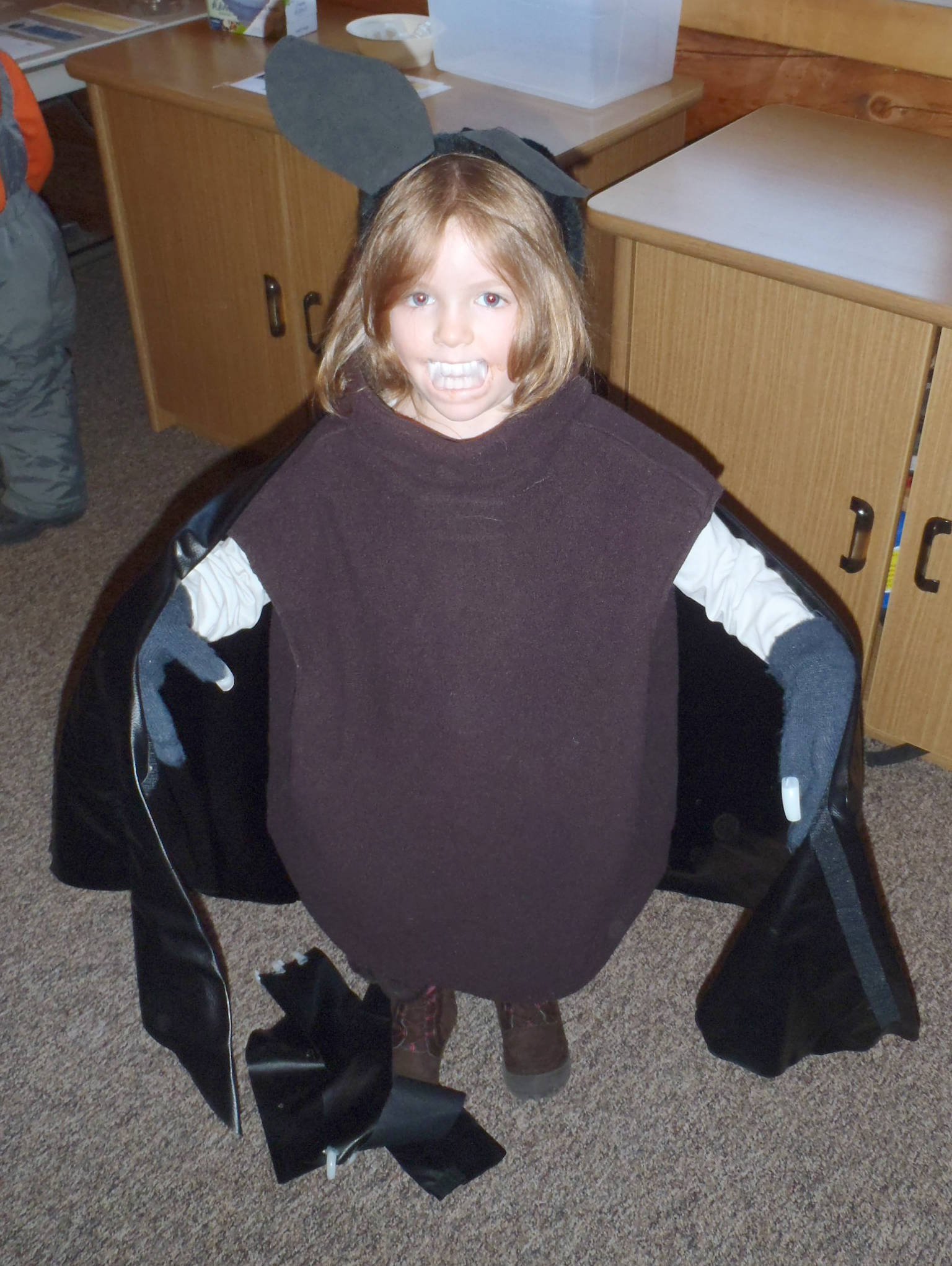“Why don’t bats get dizzy from hanging upside down?” A second grade student at Tustumena Elementary School posed this excellent question to me.
I stood there for a few moments, searching for answers, before swallowing my pride and admitting that I did not have an answer right then and there.
This inquiry came at the end of an educational program about bats I had been presenting at various elementary schools in the weeks before Halloween. We focus largely on the little brown bat, the only species of bat on the Kenai Peninsula.
In one section of the program, I dress up a student like a bat as a visual aid for understanding the parts of a bat’s body. Or, as I like to say, a “disguised” educational tool used to teach students anatomy and physical adaptations.
I go on to place costumelike parts of the bat’s body — claws, wings and such — onto the brave volunteer. I explain that a bat has claws on each of its toes that help lock its grip while roosting on the cave wall, rock or tree branch.
I then outfit our volunteer with pleather wings to help explain that bats have unique wings. The wings of a bat are, in essence, giant webbed hands. Their finger bones just about match the length of their body, and the wings themselves are a layer of skin that encompass the fingers.
The bat’s wings function differently than a bird’s because of their various anatomical differences. The bat’s “skin and bone” wings cannot create enough lift for it to take off flying right from the ground. Instead, bats must fall or jump from something in order to kick-start their flight.
This is where the adaptive abilities of creatures in the natural world show their true beauty. The bat combined this caveated ability to fly with its behavior of roosting in an upside down position to form the perfect natural takeoff.
The bat simply lets go from its roost, sending the animal into a freefall, which is precisely the state it needs to enter in order to begin flying. One adaptation complements the other flawlessly.
Of course, it seemed flawless until I asked the students in that classroom at Tustumena Elementary if they had any questions.
All of the information above would leave most individuals in a state of logical understanding. All of the pieces of the puzzle fit and there was nothing left for the brain to ponder. But the clever mind and free imagination of a young human can think beyond what the field guide or ranger provide.
As an Educational Ranger at Kenai National Wildlife Refuge, my duties extend beyond the classroom in situations like this. So I promised to do my research and deliver closure to this lingering curiosity.
And thus began a long string of asking various biologists this same question. Each responded the same way I did, “That is a fantastic question.” This, of course, is the pretext to the admittance of not having an answer offhand.
All in all, the answer turned out to be less simple than I had hoped. There are likely a host of different physiological and anatomical features that play into bats not getting dizzy from hanging upside down.
The best standalone reasoning I found is that bats are essentially too small for their blood flow to be affected from hanging upside down. The weight of blood in bats is negligible in the face of gravity.
Their small size also results in less physical pressure from a change in orientation. This can be thought of by picturing a human flipped upside down next to a bat flipped upside down.
The human’s blood has to flow relatively farther from one foot to the other foot than blood does in a bat. This greater distance means blood in humans builds more pressure. The bat’s relatively small size serves as a benefit since they aren’t experiencing the weight or pressure that a human does when upside down.
This is one answer among a host of other small factors that likely play their part in keeping the bat seeing straight after a few hours of roosting upside down, hanging from their feet.
Experiences like this leave me in awe of how extraordinary the developing minds of children prove to be. Their questions and curiosities are boundless, restricted by none of the conventional modes of thought a ranger, such as myself, might fall into.
I could see this question easily spiraling into a thesis on physiological structures or the effects of hemodynamics.
And this is why I always employ the old adage, “There is no such thing as a silly question.”
David Fink is a 36-week Student Conservation Association intern at the Kenai National Wildlife Refuge assisting with the Environmental Education program. Find more Refuge Notebook articles (1999–present) at https://www.fws.gov/refuge/Kenai/community/refuge_notebook.html

